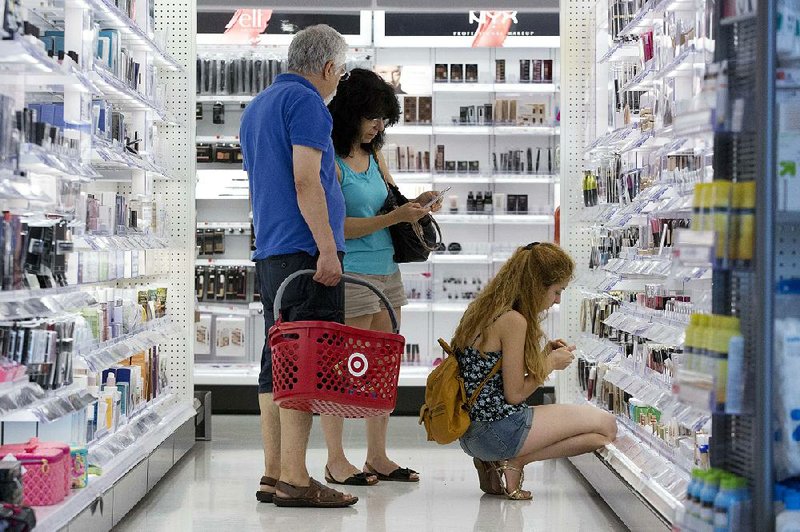WASHINGTON -- U.S. consumers increased their spending moderately in July, as wages and salaries made their biggest jump in eight months.
Spending rose 0.3 percent in July, helped by purchases of big-ticket items such as cars, the Commerce Department reported Friday. June's result was revised up to a matching 0.3 percent gain.
"The consumer is pretty much chugging along," said Tom Simons, an economist at Jefferies LLC in New York, who correctly forecast the spending gain. "It's clearly encouraging to see the wage gain. We definitely need more of that to see a sustained acceleration in consumption."
Incomes increased 0.4 percent in July. The key category of wages and salaries rose 0.5 percent, the biggest advance since November.
The report suggests that consumer spending, which accounts for 70 percent of economic activity, got off to a good start in the third quarter as strong momentum from the second quarter rolled into July.
Economists, who believe the economy will be fueled in the second half of this year by solid income and spending gains, were encouraged by the July results.
"All of the data are heading in the right direction," said Jennifer Lee, senior economist at BMO Capital Markets in a note to clients. "Except for inflation."
A key price gauge tied to consumer spending that is closely watched by the Federal Reserve posted a tiny 0.1 percent increase in July. Over the past 12 months, the figure is up just 0.3 percent, reflecting the big plunge in energy prices over the past year.
Excluding volatile energy and food, prices are up just 1.2 percent over the past 12 months, far below the Fed's goal of having prices rise at an annual rate of 2 percent.
The low inflation rate and recent turbulence in stock markets, triggered by a sharp slowdown in the Chinese economy, have left many economists believing that the central bank will keep a key interest rate unchanged when the Fed meets in September. That is a reversal of expectations from just a few weeks ago that the Fed would likely raise rates next month.
The saving rate rose to 4.9 percent in July from 4.7 percent in June, stemming in part from a big jump in after-tax income of 0.5 percent, the best gain since November.
The overall economy, as measured by the gross domestic product, grew at a healthy 3.7 percent pace in the April-June quarter, the government reported Thursday in a sharp upward revision of an earlier estimate of a more moderate gain of 2.3 percent.
Part of the newfound strength came from an upward revision in consumer spending, which grew at a 3.1 percent rate in the spring, up sharply from a 1.8 percent increase in the first quarter when a harsh winter kept shoppers away from stores.
Economists believe that growth will remain solid in the current July-September period.
Paul Ashworth, chief U.S. economist at Capital Economics, said that the strength in consumer spending indicated that the economy may perform better than his current estimate of a 2.5 percent growth rate in the third quarter.
Analysts expect spending will be supported by further strong gains in employment. The unemployment rate in July was at a seven-year low of 5.3 percent. With more people working, that supports continued gains in consumer spending.
Information for this article was contributed by Shobhana Chandra of Bloomberg News.
Business on 08/29/2015
